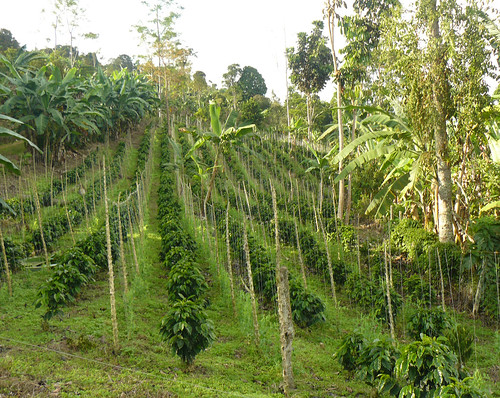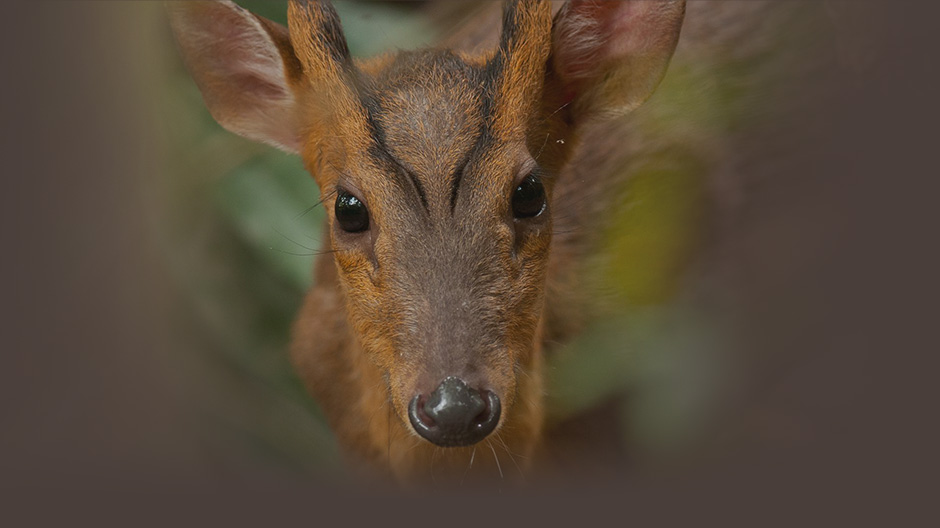 過去50年間,全球藍鶯數量減少70%,催生了哥倫比亞保育廊道計畫。3個鳥類保育組織花了10年時間,終於成功建立起鳥類保育廊道,作為藍鶯(Cerulean warblers)的重要冬季棲地。
過去50年間,全球藍鶯數量減少70%,催生了哥倫比亞保育廊道計畫。3個鳥類保育組織花了10年時間,終於成功建立起鳥類保育廊道,作為藍鶯(Cerulean warblers)的重要冬季棲地。
美洲瀕危藍鶯 南北奔波找活路
藍鶯是一種小型鳴禽,體色為天藍色,在南北美之間遷徙。4月藍鶯飛往美國繁殖,8月飛往哥倫比亞山林或南美西部其他地區。
藍鶯曾是俄亥俄州和密西西比河谷數量最多的繁殖鶯類,現在卻是西半球存續風險最高的候鳥之一,野外只剩下約50萬隻。美洲中西部和阿帕拉契山脈雖然也有藍鶯保育活動,但失去拉美冬季棲地,數量仍持續減少。
「哥倫比亞以全世界最高鳥類生物多樣性為傲──擁有超過1,900種鳥種,社群也認識並重視北美來訪的候鳥。」ProAves基金會執行長Alonso Quevedo說。
ProAves基金會2005年在Yariquíes國家公園現址進行動植物調查,幫助Yariquíes國家公園的成立,佔地194,810英畝。同年,ProAves在附近建立545英畝的藍鶯保護區。2007年又成立了灰鳳冠雉保護區,目前佔地4,470英畝。
確立生態地役權 社區都願意幫忙
約3,000英畝土地,種下了500,000株26種原生樹苗,將現存的棲地連接起來,形成6英哩長、半英哩寬的廊道,同時也增加了林冠。這些原生樹苗都是在附近的藍鶯與灰鳳冠雉保護區培育出來的。生態廊道連接了藍鶯保護區所在的Yariquíes國家公園,和灰鳳冠雉保護區所在的和平山。
此外,哥倫比亞也首次運用18個保育地役權,保護僅存的原始森林。
「令人振奮的是,生態地役權的建立,鼓舞廊道和緩衝區當地的社群參與保育工作,改採用生態友善的農法,包括樹蔭咖啡和可可。保育和生態重建帶來自然效益,像是水土保持、水質改善和產量增加,也是社群參與的誘因。」美國鳥類保育協會國際地景保育官Jason Berry說。
咖啡、可可、畜牧業 在地產業提供候鳥棲地
總計有超過220個地主參與保育廊道計畫,在咖啡園、可可園和牧場種植遮蔭樹木。當地社群也以混牧林業(Silvopasture)──在牧場種樹──保護牛隻健康、商業產量和提供鳥類樹蔭。
新生態廊道保存了150種鳥類的棲地,包括許多候鳥在內,像是金翅鶯、美國鶇和玫瑰胸蠟嘴鳥,也提供特有和瀕危鳥種棲地,包括極度瀕危的哥倫比亞特有種領林鶉和山鷯哥。
生態廊道計畫具有衡量生物多樣性改變的方法,像是測量藍鶯和領林鶉族群數量的變化。目前計畫以衛星影像評估森林面積的增長,作為棲地增加的指標。這項資料將作為下一階段樹木培育以及未來的廊道3倍成長計畫的參考。
Three bird conservation groups have succeeded in their 10-year effort to establish a conservation corridor in Colombia that offers crucial winter habitat to help reverse the decline of Cerulean warblers – small sky-blue songbirds that migrate between North and South America.
Cerulean warblers are now flying north to breed in the United States. They leave in August and migrate to the forested mountains of Colombia and elsewhere in western South America.
The species was once one of the most abundant breeding warblers in the Ohio and Mississippi river valleys. Now it is one of the most imperiled migrant songbird species in the Western Hemisphere, with only about half a million Cerulean warblers remaining.
The Colombian conservation corridor effort was motivated by a 70 percent decline in the global population of Cerulean warblers over the last 50 years.
“People in Colombia celebrate being the nation with the highest bird diversity in the world,” said Alonso Quevedo, executive director of Fundación ProAves. “It is significant that with over 1,900 avian species, communities are able to recognize and value the subset of migratory birds that arrive from North America.”
More than 220 private landowners participated in the project by planting shade trees on their coffee and cocoa farms and cattle ranches.
Some 3,000 acres of land were reforested to connect existing habitat into a corridor six-miles long by half-a-mile wide, using 500,000 seedlings of 26 native tree species grown in nurseries established in the nearby Cerulean Warbler and Pauxi Pauxi bird reserves, as well as promote more canopy cover.
Eighteen conservation easements, the first in Colombia, were used to conserve remnant patches of native forest.
“We’re excited at how the establishment of ecological easements has motivated local communities within the corridor and buffer zone,” said Jason Berry, International Landscape Conservation Officer for American Bird Conservancy.
“In particular, we have seen the widespread implementation of good agricultural practices, including increased use of shade coffee and cocoa. Clearly, the natural incentives for conservation and ecological restoration, such as protection from erosion and maintaining top soil as well as improving water quality and quantity of agriculture, have been key factors.”
Silvopasture practices – the planting of trees in otherwise open cattle pastures – were used to benefit the health of cattle and business productivity as well as provide tree cover for birds.
This initiative provides a protective corridor of habitat for a host of birds between the Yariquíes National Park, where the Cerulean Warbler Bird Reserve is located, and the Cerro de la Paz mountain, where the Pauxi Pauxi Reserve is located.
Expeditions by ProAves to document the animals and plants of the region supported the creation of the Yariguíes National Park, covering 194,810 acres, in 2005.
In the same year, ProAves established a nearby 545-acre private Cerulean Warbler Reserve, and then in 2007, founded the Pauxi Pauxi Reserve, which is now 4,470 acres.
Conservation work on the breeding grounds in the Midwest and Appalachia have helped the Cerulean warbler, but as the birds lose winter habitat in Latin America, their declines have continued.
The new conservation corridor initiative protects and preserves critical habitat for more than 150 species of birds including many migrants, such as the Golden-winged warbler, American redstart, and Rose-breasted grosbeak.
In addition, it provides habitat for other endemic and threatened species such as the Gorgeted wood-quail and Mountain grackle, two species found only in Colombia and considered globally endangered.
This project includes a component to measure biodiversity success, such as changes in the population of Cerulean warbler and Gorgeted wood-quail.
Currently, monitoring protocols are in place for reforestation of forest cover change using satellite imagery, which will indicate how much habitat has been created.
This information will inform the next phase of nurturing the growth of trees that have been planted and planning for the tripling of the corridor in the future.
※ 全文及圖片詳見:ENS
 網站捷徑
網站捷徑




